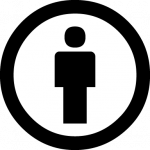
This image courtesy of University of the Western Cape is All Rights Reserved.
Main Content:
- Introduction to Teaching, Learning and Assessment
- Teaching and learning environments (theoretical and clinical)
- Media design, selection and presentation
- Various teaching methodologies
- Assessment of learning both theoretical and clinical using appropriate assessment strategies
- Electronic teaching and learning
Primary Author: Lorraine Fakude
Institution: Department of Nursing, University of the Western Cape
Syllabus
Credit Value: 20
Students credited with this module will demonstrate competence in planning, designing and implementation for facilitation of learning in a variety of settings.
I. Grading
Component / Percentage (100%)
Problem Sets / 20%
Written Report/Oral Presentation of Special Project / 15%
Examination 1 / 20%
Examination 2 / 20%
Final Examination 25%
II. Learning Outcomes:
Teaching and learning environments (theoretical and clinical)
- Design and implement classroom learning sessions using appropriate teaching strategies based on expected learning outcomes taking into consideration the principles of adult learning.
- Teaching plans and implementation thereof, place emphasis on collaborative learning, learner needs and differences, development of self-directed learning, inquiring minds, as well as the complexity and unpredictability of clinical learning environments
- Plan and implement clinical learning outcomes based on a comprehensive understanding of principles and strategies of clinical learning outcomes with specific reference to professional education.
Assessment of learning both theoretical and clinical using appropriate assessment strategies
- Identification, selection and combination of assessment approaches and strategies is based on a coherent and logical understanding of the requirements of applied competence and integrated assessment and meets the criteria for credible, trustworthy, feasible, and valid assessment.
- Assessment validly and reliably measures expected learning outcomes, in particular the higher-order learning that characterizes higher education.
- Student creates assessment tools with objectives that have consistent, measurable criteria.
- Assessment and grading defines and protects academic standards.
III. Learning Units:
Unit 1: Conditions for learning
Unit 2: Learning Domains and Learning Objectives
Unit 3: Variations in teaching and learning strategies
Unit 4: Tools for the trade: Designing and using media to enhance teaching
Unit 5: Assessment Strategies
Unit 6: Clinical Skills Teaching and Learning

This image courtesy of University of the Western Cape is All Rights Reserved.
| Document Title | Creator | Downloads | License |
|---|---|---|---|
|
Syllabus |
Lorraine Fakude
University of the Western Cape
|
| Document Title | Creator | Downloads | License |
|---|---|---|---|
|
Conditions of learning |
Lorraine Fakude
University of the Western Cape
|
||
|
Learning outcomes |
Lorraine Fakude
University of the Western Cape
|
||
|
Taxonomies of learning |
Lorraine Fakude
University of the Western Cape
|


